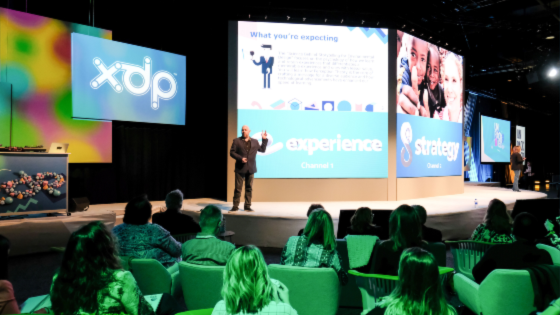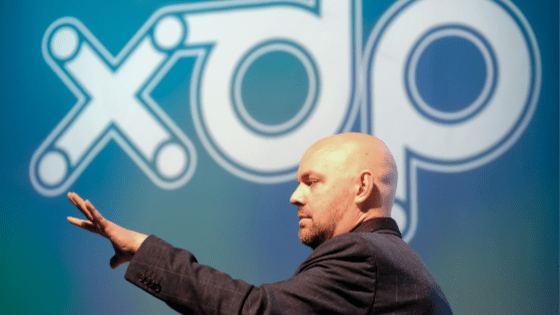Creating Transformative Experiences.
Our industry has spent the last 5 years talking about how important it is to design experiences. This aim is undeniably true. However, it is time to shift the conversation towards how the live event experience we design can have transformational power. Why is it important? Because the experiences that do not create behaviour changes yield little to no return on the investment.
Event attendees are demanding more from live events! We as an industry have been busy reacting to this by deploying new and innovative ways to appease them. We have activated exciting technologies like VR, AR and projection mapping with great excitement and “wow”. We have created fun game activations in to our tradeshows and/or foyers spaces. We have activated live engagement tools utilizing attendee smart devices. Chefs have been challenged to create new and exciting menus with innovative delivery methods, including projection mapping and interactive food stations.
But as we rush to appease our demanding attendees, forever desperate for the new “Wow” we have often lost sight of the opportunity to positively change the way our stakeholders feel, think, see, say and do.


The time has come for #Eventprofs to take the lead and shift the focus from the product and services to the outcomes we create.
That is the value represented in the way we change the world around us. The way live events contribute to the progression and evolution of our society. The hot topic raised at the Global Events Forum was commoditization of the events industry. A highly valuable topic, but arguably 10-15 years too late.
When Pine and Gilmore released The Experience Economy in the mid 1990s they stated: Businesses of the day are presenting a higher value product by attaching experience to their customer interactions. They give the example of Starbucks, stating that people pay five times the cost for a cup of coffee compared to buying the bean from the supermarket or primary commodity producer. They pay more, because the experience they get in the store increases the value of the cup of coffee. They extend that another level with the example of the $15 coffee available in the Piazza San Marco in Venice Italy. Making the bold claim that most people are willing to pay 3 times what they pay at Starbucks because the extraordinary experience they have in Venice. Sitting in that Piazza cannot be easily replicated. The experience not only stays in their memory, but forever transforms their feelings about coffee and that memorable (likely life changing) trip to Italy.
With the events industry’s battle against commoditization we must embrace this concept of value from the outcomes we create. Very few live event buyers can argue the cost if we, as event designers, can guarantee they will achieve the transformational behaviour changes required from their event.
I hear you say “But you’re a technology guy, why all this emphasis on designing for behaviour change? Shouldn’t you be pushing more technology instead.” The short answer is yes, I would love you to use more technology. But at FMAV we are firmly focused on only applying technology that is purposeful, intentional and informs or enhances the desired behavioural change. I recently presented to a large group of association professionals in Washington DC who were curious about the latest “wow” trends. I appeased their desire to see some case studies that showcased technology solutions, but only once they understood the reasons for those technology choices.
The way we align technology to the event narrative and how our solutions enhance storytelling has been fundamental to all our recent success in the event technology production industry segment. We have been digging deeper with client to better understand their behaviour change objectives. We have been asking them and helping the craft the experience and align it to their storytelling. Technology’s place in the live event experience can be likened to a catalyst or engine.
 The human experience is the most vital part of experience design. Therefore, as we design experience, we must treat technology as a tool that encourages and enhances the engagement and immersion the attendees experience. Never distracting the attendee from the message or the face-to-face intimate human experience, instead reinforcing it. But how do you not get lost in the myriad of solutions that exist in the technology world? I challenge that we as design teams must have a firm understanding of the event narrative before we look for “Wow” technology. Could we design live event experiences that utilizes the fundamental foundation of storytelling and insert technologies to enable engagement and immersion in the story?
The human experience is the most vital part of experience design. Therefore, as we design experience, we must treat technology as a tool that encourages and enhances the engagement and immersion the attendees experience. Never distracting the attendee from the message or the face-to-face intimate human experience, instead reinforcing it. But how do you not get lost in the myriad of solutions that exist in the technology world? I challenge that we as design teams must have a firm understanding of the event narrative before we look for “Wow” technology. Could we design live event experiences that utilizes the fundamental foundation of storytelling and insert technologies to enable engagement and immersion in the story?





Comments